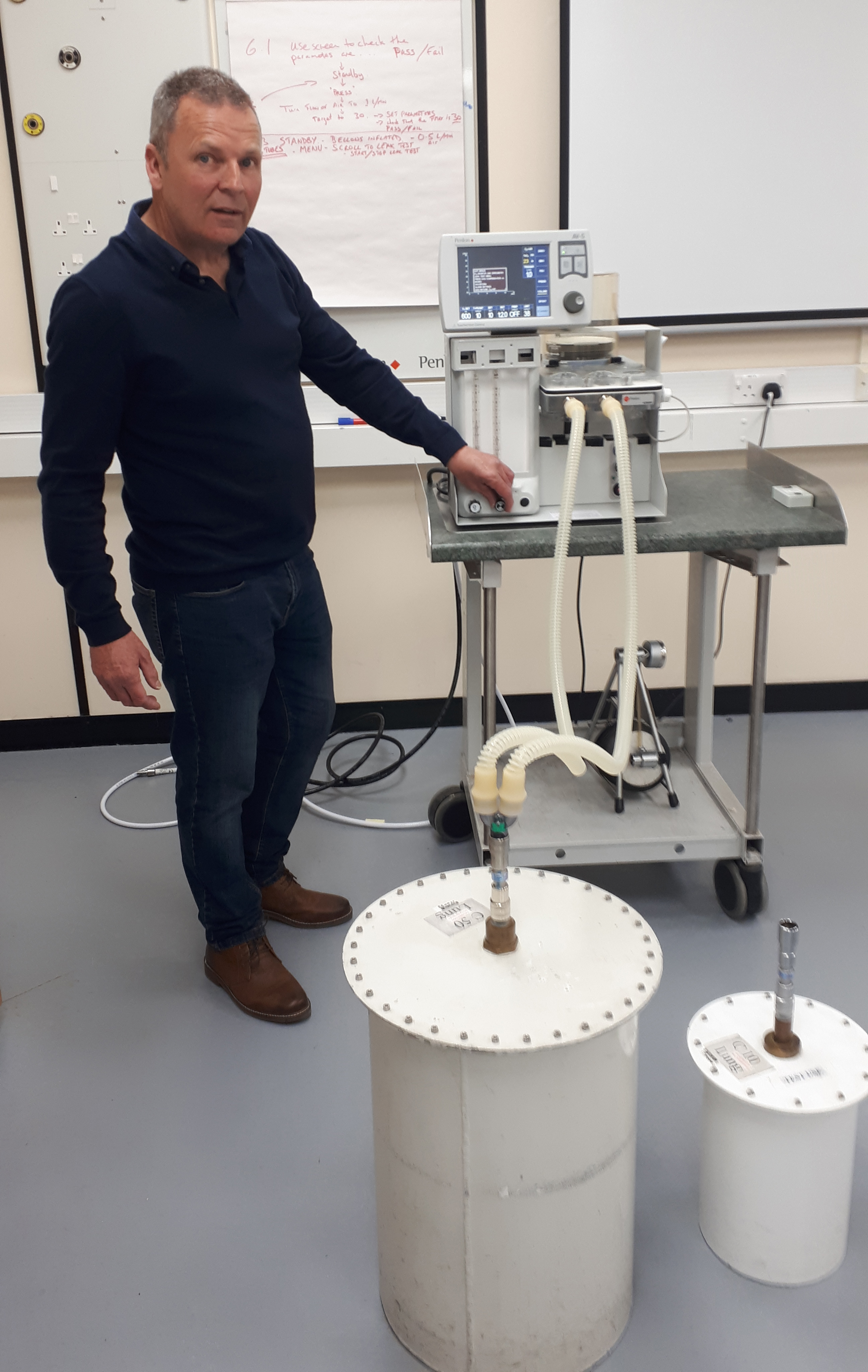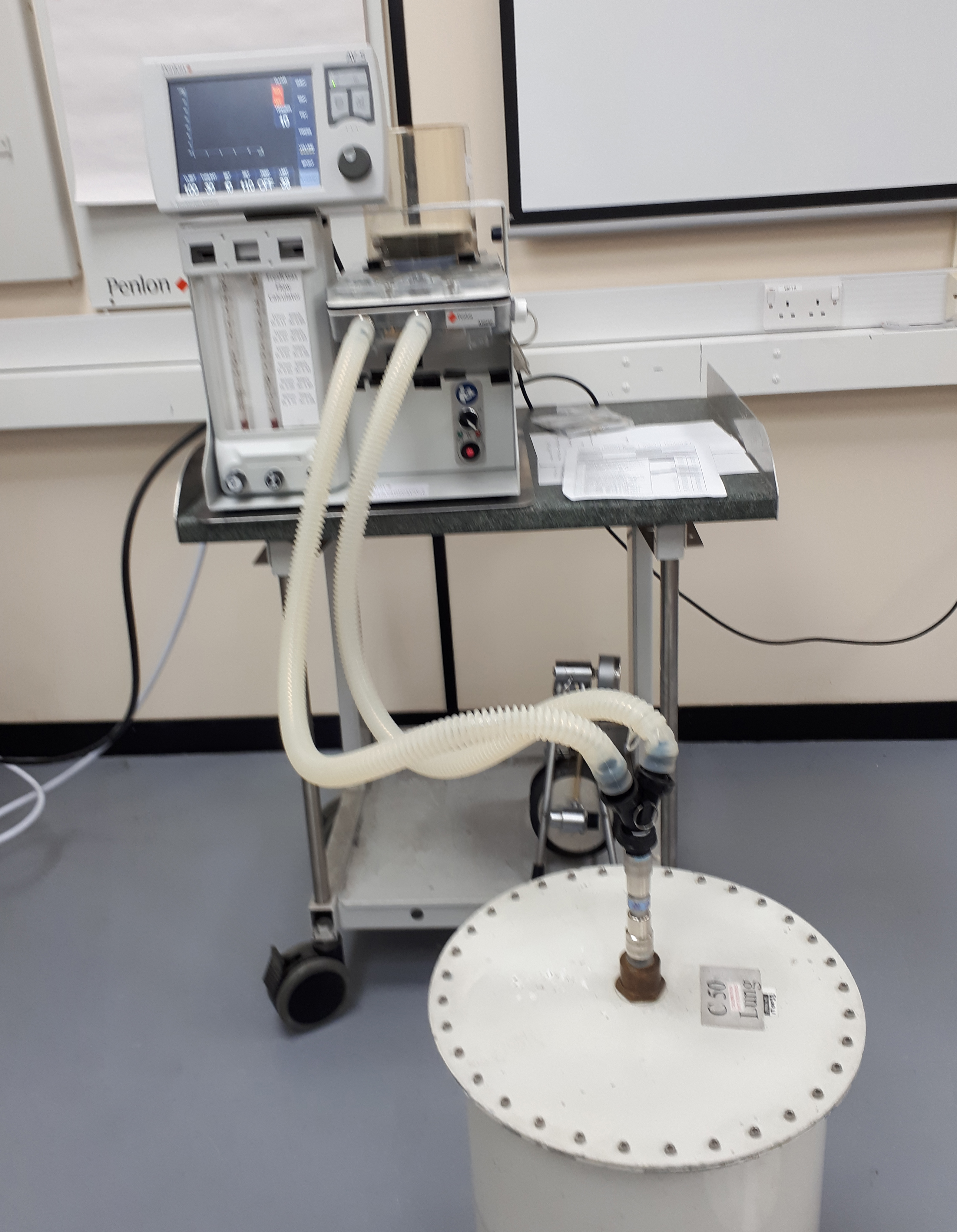 One of the major challenges for the UK in facing the Covid-19 pandemic is the production of ventilators, to keep patients with respiratory difficulties out of intensive care. The medical equipment manufacturer Penlon, based in Abingdon, already supplies the NHS with machines used by anaesthetists in operating theatres. After it was clear that the demand for ventilators was going to increase dramatically, the company developed a simpler device that can be produced on mass and used on a ward as a ventilator: breathing for a patient when they are unable to do it themselves.
One of the major challenges for the UK in facing the Covid-19 pandemic is the production of ventilators, to keep patients with respiratory difficulties out of intensive care. The medical equipment manufacturer Penlon, based in Abingdon, already supplies the NHS with machines used by anaesthetists in operating theatres. After it was clear that the demand for ventilators was going to increase dramatically, the company developed a simpler device that can be produced on mass and used on a ward as a ventilator: breathing for a patient when they are unable to do it themselves.
Penlon is part of a consortium, VentilatorChallengeUK, of over 20 companies including Airbus, Ford and McLaren, who will produce the ventilators on a large scale, as featured by the BBC and the Guardian. Before the tens of thousands of ventilators can be used by the NHS, they need to be tested and calibrated, to ensure they can be delivered under the company's medical licence.
Chosen for their high level of technical skill, STFC staff members will deliver training in how to test the ventilators to staff from the other companies in the collaboration, who will then carry out the testing at Penlon's facility, and others nearby.
The first four 'super trainers' from across the RAL campus; Phil Rice (CLF), John Crawford (ISIS), Angela George (DLS), and Mark Anderson (RAL Space) spent the weekend at Penlon developing a training manual that will then be used by the STFC expert trainers. During the evenings this week, these four will use their manual to train 36 other STFC staff members (Alistair Cox, Andrew Norton and Luke Benson being the CLF staff involved), to ensure that all are capable of training others by the time the ventilators come off the production line.

These 36 trainers will in turn train a further <300 people from Mercedes F1. Once trained, their job will be an expert one, to test and sign off the ventilators as fit for use before they are shipped directly to the NHS. The aim is to make 60,000 ventilators which will be tested by the F1 team 24 hours a day in 3 shifts.
The test they will be training people to carry out is 30-40 minutes long and involves testing the pressure and airflow through the ventilator while it inflates/deflates a set of steel “lungs". It is important for the STFC to ensure that all testers understand the strictness of the method and the clear boundaries that need to be followed when testing.
CLF 'super trainer', Phil Rice said; “When the CLF technicians were asked if they would like to volunteer to help with the ventilator production I wanted to be involved straight away. This is a massive effort to save people's lives, I felt I had the necessary skills and I wanted to use them in any way I could to help.
Training this many people this quickly is always challenging, but the team are having to ensure they maintain social distancing while doing so, to make sure they stay safe and well. This restricts the number of people who can be trained as trainers at one time. There is also currently only one prototype that they can use for this training: one is with the NHS, and another will be arriving at Penlon on Wednesday and then they should be able to speed up the rollout of this training.
“It's very hard for our team of STFC technicians to work from home, when the bulk of our roles is hands-on, based on site" says John Crawford; “so this is a good way for us all to be able to contribute." This will especially be the case when the testing shifts begin at Penlon, GKN, and the other testing locations nearby.
Director of the CLF, John Collier said; “I'm pleased that some our expert CLF technicians have been able to help this national effort in providing much needed ventilators into the NHS. It is clearly a major challenge but I'm proud to see some of our best people, quickly working with similar colleagues from other organisations, to rise to it."
Photo 1: Technician Phil Rice
Photo 2: Close up of the Ventilator testing method with its steel “lung"
